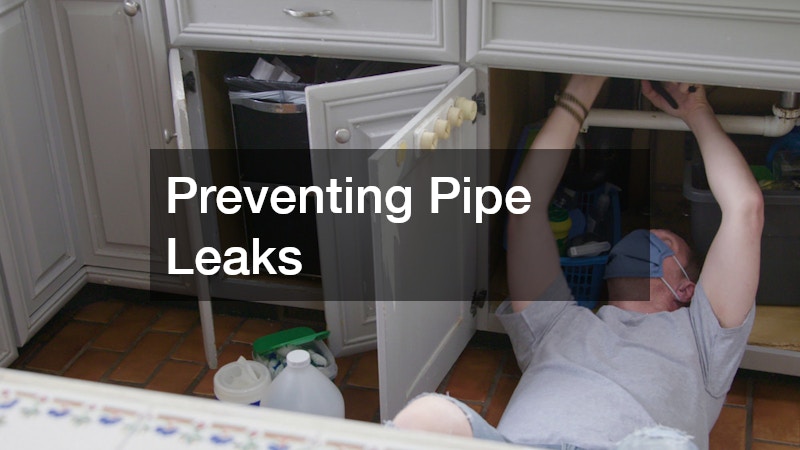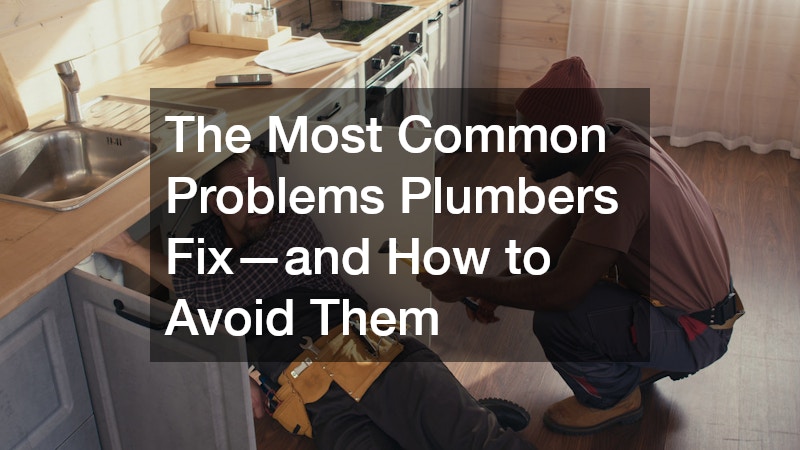Discover the plumbing issues most frequently encountered by homeowners and learn practical steps to prevent them. This article will explore common plumbing dilemmas and offer tips for maintaining a trouble-free plumbing system in your home.
Understanding Drain Clogs
Drain clogs are one of the most bothersome yet frequent plumbing issues faced by homeowners. They primarily occur in sinks, showers, and tubs, creating inconvenient backups and potential water damage. Common causes include the accumulation of soap residue, hair, food particles, and grease which gradually form blockages that impede water flow.
Homes with older plumbing may experience clogs more frequently due to worn pipes that capture debris more easily. Regular use of kitchen garbage disposals and improper waste disposal can exacerbate the issue, leading to more severe blockages. Understanding these causes is the first step in proactively managing and preventing drain clogs.
Prevention Tips for Clog-Free Drains
To maintain clog-free drains, consider using drain covers to capture debris before it enters the plumbing system. Implementing a regular cleaning schedule with non-corrosive solutions can help dissolve minor buildups before they become significant. Educating household members about proper waste disposal and avoiding pouring grease down the drain are key preventative measures.
Avoid using chemical drain cleaners regularly as they can corrode pipes over time, leading to more severe issues. Instead, consider environmentally friendly options, like baking soda and vinegar or enzymatic cleaners, which can safely maintain clear drains. Regularly flushing drains with hot water can also prevent the accumulation of materials that cause blockages.
Solutions for Persistent Clogs
If faced with a stubborn clog, a plunger can often dislodge the obstruction effectively. If the clog persists, using a plumber’s snake or auger can reach deeper into pipes to clear more entrenched blockages. These tools provide a mechanized advantage to remove debris that can’t be tackled with plunging alone.
For those without the proper tools, draining a sink and removing the U-bend for cleaning can manually clear the clog. This method, although more involved, is often necessary for persistent situations and can save costs associated with hiring a plumber. Always ensure to follow safety practices to avoid injury or further damage to pipes during this process.
Identifying Leak Causes
Leaking pipes are often the result of corrosion, high water pressure, or joint damage within the plumbing system. Identifying these leaks early is crucial for minimizing water damage and preventing mold growth. Common signs include water stains, unusual water bills, and visible moisture around pipes.
Pipes made from older materials like galvanized steel might corrode more easily, increasing the potential for leaks. High water pressure can strain pipes, leading to small leaks that could worsen over time if not corrected. It’s important for homeowners to regularly inspect their plumbing system for small leaks before they escalate into major repairs.
Preventing Pipe Leaks
Preventive maintenance is key to avoiding leaks, including regular checks of visible pipework and ensuring secure connections. Replacing aging or damaged pipes can prevent leaks caused by corrosion or material failure. Homeowners should also consider installing water pressure regulators to maintain safe pressure levels within the plumbing system.
Insulating pipes in colder climates can prevent freezing and subsequent bursting during winter months. Routine checks for rust or moisture around fittings can catch potential problems early, preventing significant water loss. Creating a maintenance schedule can help keep your plumbing system in optimal condition, reducing the likelihood of leaks.
Quick Fixes for Temporary Relief
When dealing with leaks, temporary fixes like pipe clamps or rubber hose patches can provide immediate relief. These solutions are designed to minimize water loss until a more permanent repair can be made. They are particularly useful when you need quick action before professional help becomes available.
Teflon tape can also be used as a temporary sealant for minor leaks around pipe threads and joints. Applying this sealant correctly can provide a tight enough seal to minimize leak severity. However, it’s essential to understand that these are short-term fixes; permanent solutions should be sought to address underlying issues.
Diagnosing Low Water Pressure
Low water pressure can stem from a variety of sources, including clogged pipes, malfunctioning valves, or municipal supply issues. Common symptoms include slow-filling appliances and a noticeable drop in shower flow. Identifying the root cause early ensures quicker resolutions and less disruption to daily life.
Clogged aerators in faucets and showerheads are frequent culprits, often caused by sediment buildup. Checking and cleaning these components can restore normal pressure levels in many instances. In other cases, a more thorough inspection is needed to track down the issue within the plumbing system.
When to Consult a Plumber
While some low water pressure issues can be handled independently, more persistent or complex problems require professional intervention. Situations such as sudden drops in pressure, widespread system failures, or constant low readings suggest serious underlying issues. Professional plumbers ensures that comprehensive evaluations and solutions are applied.
By understanding and addressing these common plumbing problems, homeowners can ensure a smooth-running plumbing system and avoid costly repairs. Regular maintenance and early detection are key in preventing issues from escalating, saving both time and money in the long run. Staying proactive about your home’s plumbing can lead to greater peace of mind and a more comfortable living environment.

